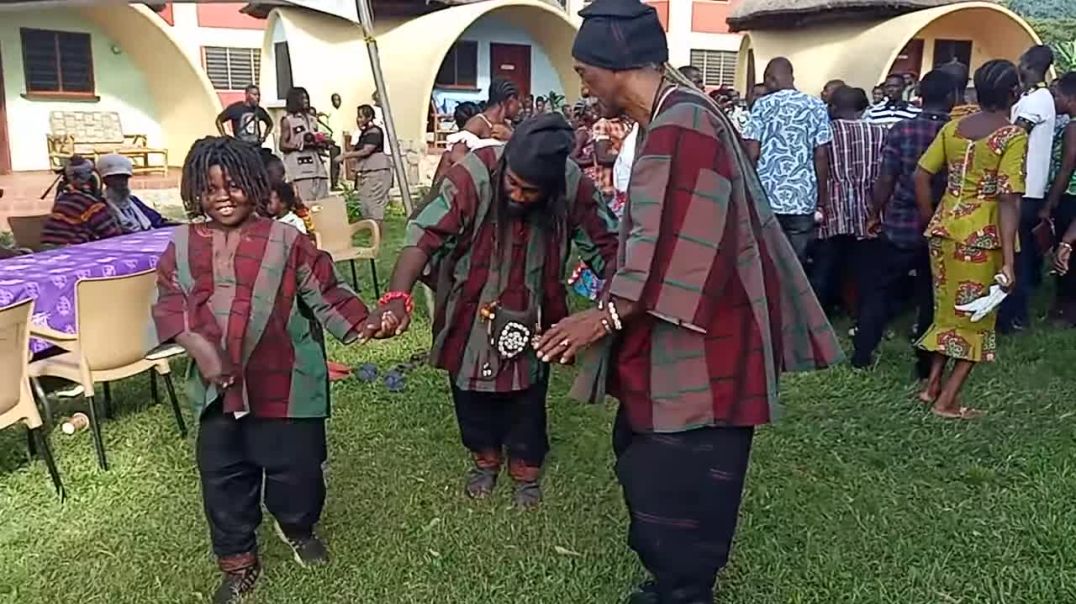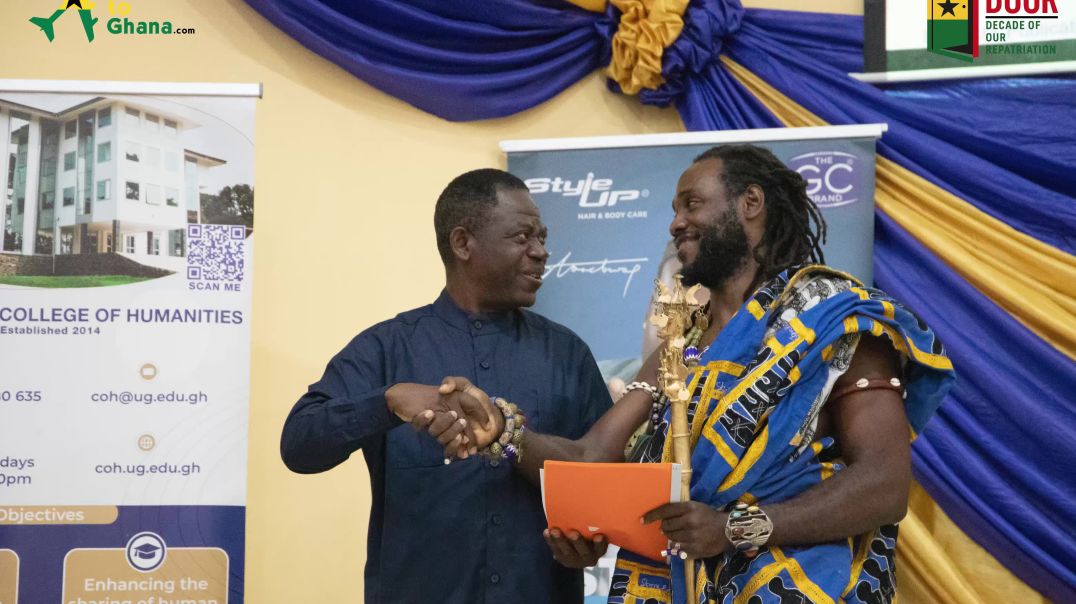
Subscribe for $9.99 and unlock all the videos.
- General Videos
- Music
- Economics
- Health
- Travel & Events
- History
- Psychology
- Spirituality
- Movies
- News & Politics
- Kmtyw Combat Sciences
- Ɔbenfo Ọbádélé Kambon Videos
- Ɔbenfoɔ Kamau Kambon: Black Liberation Philosophy
- Science, Tech, Engineering and Math
- Permaculture
- Self-Sustainability
- Living Off Grid
- Yoruba Language Learning
- Education
- Mmɔfra Adesua
- Nana Kamau Kambon Playlist
- Livestream
- Komplementarity Kouples and Revolutionary Singles
- Abibitumi Film Series
- Decade of Our Repatriation
- Live
Dr. Obadele Kambon 2013 UG-Legon Vice Chancellor's Award for Outstanding Thesis - Humanities
Dr. Obadele Kambon 2013 UG-Legon Vice Chancellor's Award for Outstanding Thesis - Humanities
Comments from the external examiner:
The main findings of the research point to the fact that (a) An overwhelming majority (98%) of Full Lexicalized-Integrated SVCs have nominal counterparts; 2% do not; (b) Only 3% of Partial Lexicalized-Integrated SVCs have nominal counterparts; 97% do not; (c) Clause Chaining Serial Constructions appear to nominalize haphazardly and/or unsystematically as frozen sentences or figures of speech (idioms, proverbs, etc.; (d) The primary function of such forms, he identified, were what Charles Morris (1971) calls denotata and designata; Full Lexicalized-Integrated SVCs behave as lexicalized idioms and because of this, four criteria of idiomaticity namely -- collocability, familiarity, flexibility and compositionality -- are applied to them; and (g) There is systematicity in the pattern of nominalization behavior of serial verb nominals across the main Akan dialects.
This work recapitulates and substantially extends work already done on Akan SVCs by Osam (1994), Agyeman (2002) and others. A major contribution of the dissertation is the detailed discussion and exemplification of issues relating to nominalization of SVCs. This is the first attempt at such a detailed discussion and exemplification and the candidate deserves commendation. His categorizations are original as is his attention to scholarly detail and to showing the relationship between and among the three major Akan dialects. One could conveniently argue that this is one of the strongest points of the dissertation.
Very little has been done on Akan nominalization in general and little to nothing on SVC nominalization in particular, so this study is a trailblazer or a path-finder! Syntacticians and semanticists will cite this work and continue with the discussion and issues it raises for the next couple of decades. I am impressed with the details and both the candidate and his advisors must be commended for the high degree of systematicity employed in the synthesis and analyses done in the study.
The candidate drew his conclusions based on the actual data collected and on the results (synthesis and analysis of the data) thereby making the analytical claims have functional validity and protecting them from standing insulated from public scrutiny. This is, again, commendable.
The recommendations for future research, especially, his call for comparing SVNs with other types of nominalizations, is in the right direction more especially due to the scantiness and dearth of knowledge about nominalizations in general about Akan and other West African languages in particular.
The dissertation is very well written and I am willing to pass it without any reservation whatsoever. The content is excellent as is its rendition.
Comments from the internal examiner:
The study does a good job of relating the data and findings to broader theoretical debates in the Functional/cognitive linguistic literature. For example, study results suggest that, at least in the Akan data examined, higher degrees of semantic integration in complex forms correlate with lower degrees of iconicity. Further, the subtype categories of serial verb constructions identified by Osam (1994) are "fuzzy" categories in terms of ability to undergo nominalization. This supports the prototype approach to categorization, rather than a classical "sharp-boundary" approach to categorization.
Though the author does not particularly draw it out rhetorically, the study sits squarely within the linguistic sub-field of Lexicography: the study is a detailed investigation of speakers' lexical knowledge of nouns formed (either historically or productively possibly in the moment of speaking) from serial verb constructions. In my view, the lexicographic work, bringing out native-speaker knowledge about the complex forms including in some cases how this may have changed across time and may vary by dialect, may be one of the most enduring contributions of the study. Many of the item-by-item findings could, for example, largely be incorporated into an etymological dictionary of Akan.
The study contributes new information to understanding the cross-linguistic and Akan-internal typology of nominalizations of serial verb constructions. The minute detail on dialect variation is valuable for sociolinguistic variationist studies.





















